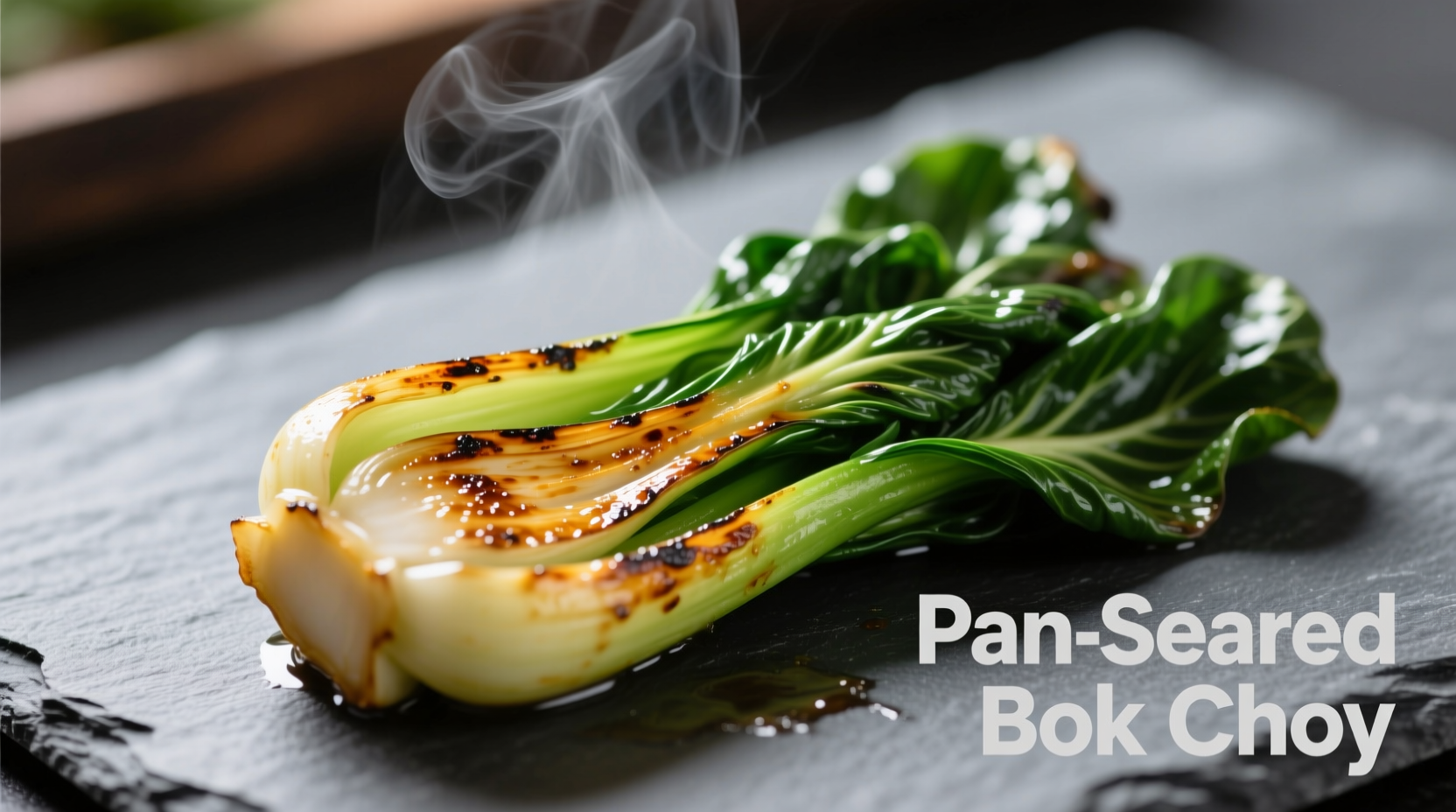Discover the authentic Chinese kitchen technique that transforms humble bok choy into a restaurant-quality side dish. As a staple in Asian cuisine for over 1,500 years, bok choy's delicate flavor and crisp texture require precise pan handling to avoid common pitfalls like sogginess or uneven cooking. This guide reveals the professional chef's approach to achieving perfect results every time.
Prep Like a Pro: Selecting and Preparing Bok Choy
Start with fresh, crisp bok choy—look for firm, bright green stalks and crisp white bases without yellowing. The USDA recommends selecting smaller baby bok choy (6-8 inches) for more tender texture and sweeter flavor. Proper preparation prevents waterlogged results:
- Wash thoroughly: Soak in cold water for 2 minutes to remove grit from between stalks
- Dry completely: Use a salad spinner followed by patting with clean towels (water causes steaming)
- Cut strategically: Separate stalks from leaves at the base—this is crucial for even cooking
- Size matters: Cut thicker stalks lengthwise for uniform pieces
| Cooking Method | Texture Result | Nutrient Retention | Time Required |
|---|---|---|---|
| Pan-frying (proper technique) | Crisp-tender stalks, vibrant leaves | 90% vitamin C preserved | 8-10 minutes |
| Boiling | Soggy, limp texture | 40% vitamin C lost | 5-7 minutes |
| Steaming | Uniformly soft | 75% vitamin C preserved | 6-8 minutes |
The Perfect Pan Cooking Sequence
Professional kitchens use this two-stage method developed through centuries of Chinese culinary tradition. The key is understanding that stalks require more cooking time than delicate leaves:
Stage 1: Cooking the Stalks
- Heat 1 tbsp peanut oil (smoke point 450°F) in a carbon steel wok or cast iron skillet over medium-high heat until shimmering (about 350°F)
- Add aromatics: 1 minced garlic clove and 1 tsp finely sliced ginger
- Wait 30 seconds until fragrant but not browned
- Add bok choy stalks in a single layer—don't overcrowd the pan
- Cook undisturbed for 2 minutes to develop caramelization
- Stir-fry for additional 2-3 minutes until stalks become translucent at edges
Stage 2: Adding the Leaves
- Add bok choy leaves in batches, stirring gently
- Cook for 60-90 seconds until leaves wilt but remain vibrant green
- Finish with seasoning: 1 tsp soy sauce, 1/2 tsp sesame oil, and a pinch of sugar
- Toss for 15 seconds to evenly coat
- Immediately transfer to serving dish to prevent carryover cooking

Flavor Variations for Every Palate
Traditional Chinese cooking offers multiple regional approaches to bok choy preparation. The Cantonese method emphasizes pure vegetable flavor, while Sichuan style incorporates subtle heat:
- Classic Cantonese: Just garlic, ginger, and a splash of Shaoxing wine
- Sichuan Style: Add 1/4 tsp Sichuan peppercorns with aromatics for that signature tingle
- Garlic Lover's: Double the garlic and finish with a squeeze of fresh lemon
- Umami Boost: Add 1 tsp fermented black beans with the soy sauce
When Pan Cooking Works Best (And When It Doesn't)
Understanding context boundaries prevents cooking failures. Pan cooking excels for:
- Fresh bok choy needing quick preparation (under 15 minutes)
- When you want crisp texture contrast between stalks and leaves
- Small-batch cooking for 1-4 servings
- When serving immediately after cooking
Avoid pan cooking when:
- Preparing large quantities (use steaming instead)
- Planning to reheat later (bok choy becomes mushy)
- Using frozen bok choy (thaw and pat dry thoroughly first)
Troubleshooting Common Problems
Fix these issues before they ruin your dish:
- Soggy bok choy: Caused by overcrowding the pan or insufficient heat. Solution: Cook in batches with proper oil temperature
- Bitter flavor: Results from overcooking or using mature bok choy. Solution: Reduce cooking time and select baby bok choy
- Uneven cooking: Happens when stalks and leaves aren't separated. Solution: Always cook stalks first
- Washed-out color: Caused by low heat or too much liquid. Solution: Use high heat and minimal sauce
Serving and Storage Guidelines
For optimal enjoyment, serve bok choy immediately after cooking when texture is perfect. The Food Safety and Inspection Service recommends consuming cooked vegetables within 2 hours at room temperature. For leftovers:
- Store in airtight container for up to 2 days
- Reheat gently in pan with 1 tsp water to revive texture
- Never microwave—this destroys the delicate texture
- Use leftovers in fried rice or soups where texture matters less
Frequently Asked Questions
How do I prevent bok choy from becoming soggy in the pan?
Ensure your pan is properly preheated to 350-375°F before adding oil. Dry bok choy thoroughly after washing, and never overcrowd the pan. Cook in batches if necessary, and add leaves only after stalks have developed slight caramelization.
Can I use other oils besides peanut oil for cooking bok choy?
Yes, avocado oil (smoke point 520°F) works well for high-heat cooking. Avoid olive oil as its lower smoke point (375-400°F) can create bitter flavors. Sesame oil should only be used as a finishing oil due to its low smoke point.
Why do I need to separate the stalks and leaves when cooking bok choy?
Bok choy stalks are denser and require more cooking time than delicate leaves. Adding them together results in either undercooked stalks or overcooked, mushy leaves. Separating them ensures both components reach perfect doneness simultaneously.
How long should bok choy cook in the pan for optimal texture?
Stalks need 3-4 minutes over medium-high heat before adding leaves. Leaves require only 60-90 seconds of cooking time. Total cooking time should be 5-6 minutes from when stalks hit the pan. Overcooking beyond 7 minutes causes texture degradation.











 浙公网安备
33010002000092号
浙公网安备
33010002000092号 浙B2-20120091-4
浙B2-20120091-4